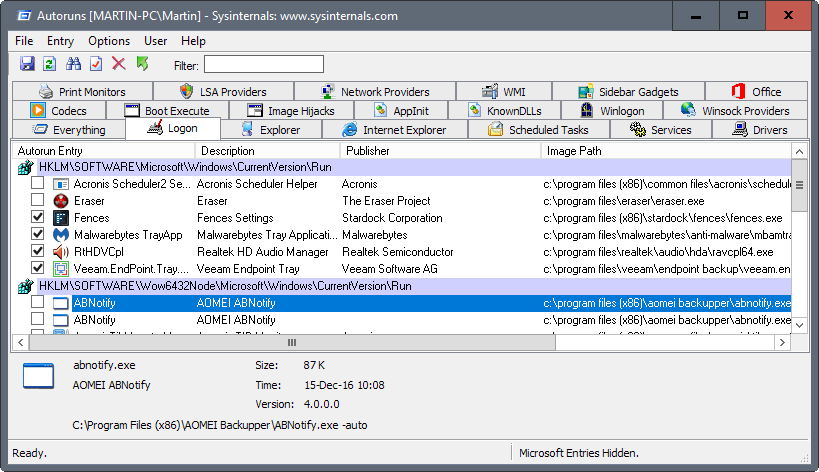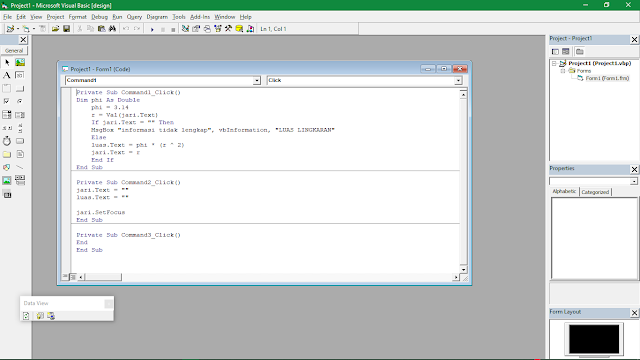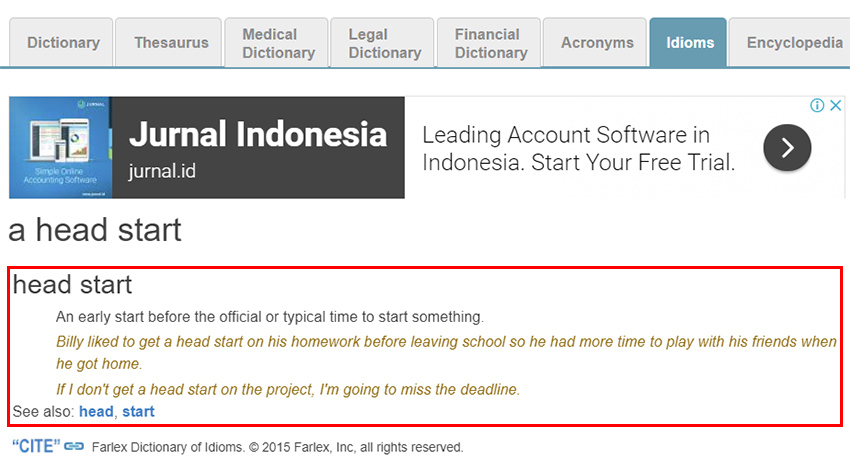Palmdale head start program: Early Childhood Education / ECE Homepage
Palmdale School District | Palmdale CA Head Start Program
Address
975 E. Avenue P-8
Palmdale CA CA
Contact Phone
(661) 273-4710
Details
Head StartWelcome to Palmdale School District Head Start! We encourage parents to become an active part of their child’s learning experience and to participate in every aspect of our program. We extend an open invitation to all parents to visit their child’sclassroom.Your family is entering a unique early childhood program, an educational program that offers new learning experiences for you and your child.Head Start will offer support and information in every area of your child’s development: social, intellectual, physical and emotional. Our staff’s goal is to give your family a “head start†in education. We want this start in education to be fun and beneficial for your entire family.
Advertise
Who is Eligible?
Children who are 3 to 5 years old are eligible for Head Start services. Pregnant women and children from birth to 3 years of age are eligible for Early Head Start services. Children and families who are homeless, in foster care, or receive TANF or SSI are also eligible for services. Eligibility is determined by Head Start program staff and some families may be eligible for services if they are determined to be at or below the federal poverty level. Some grantees enroll a percentage of children from families with incomes above the Poverty Guidelines as well.
Families are encouraged to apply.
Center Locations
- Chaparral School
37500 50th St E, Palmdale CA
(661) 273-4517 - First Christian Church
1702 E Avenue J, Lancaster CA
(661) 273-4710 - Highland High School
39055 25th St W, Palmdale CA
(661) 273-4710 - Manzanita School
38620 33rd St E, Palmdale CA
(661) 273-4710 - Mesquite School
37622 43rd St E, Palmdale CA
(661) 273-4710 - Ocotillo School
1330 W Elizabeth Lake Road, Palmdale CA
(661) 273-4710 - Palm Tree Early Head Start School
38728 3rd St E, Palmdale CA
(661) 273-4710 - Site 18
37230 37th St E, Palmdale CA
(661) 273-4710 - Tamarisk School
1843 E Avenue Q5, Palmdale CA
(661) 273-4710 - Tierra Bonita School
44900 27th St E, Lancaster CA
(661) 273-4710 - Tumbleweed School
1100 E Avenue R4, Palmdale CA
(661) 273-4710 - Vista San Gabriel School
18050 E Avenue O, Lake Los Angeles CA
(661) 273-4710 - Yucca School
38440 2nd St E, Palmdale CA
(661) 273-4710
Reviews: Be the first to review this head start provider.
Share your experience with Palmdale School District, whether your child attended, you evaluated their services, or you worked there. You can help others by writing a review.
Top Head Start Programs in Palmdale, CA
We have listed all of the Headstart programs in Palmdale, California . Click on the head start programs to view full details including maps and pictures.
If you do not see your head start listed in Palmdale California listed below, you can add it to our database here – Add Your Program.
Chaparral Head Start – CCRC
37500 50th St E
Palmdale, CA – 93552
Phone Number: (661) 285-9777
County: Los Angeles
Description blurb: The Child Care Resource Center (CCRC) manages head start locations in Van nuys Canoga Park Sun Valley Reseda Pacoima Arleta Northridge Sepulveda Granada hills Sherman Oaks Encino Tarzana.
See Full Details
Highland High School Head Start – CCRC
39055 25th St West
Palmdale, CA – 93551
Phone Number: (661) 273-4710
County: Los Angeles
Description blurb: The Child Care Resource Center (CCRC) manages Head Start locations in Van Nuys, Canoga Park, Sun Valley, Reseda, Pacoima, Arleta, Northridge, Sepulveda, Granada Hills, Sherman Oaks, Encino, and Tarzana. CCRCs partner, Palmdale School District, directly serves families in Palmdale and Lancaster. You (more)…
See Full Details
Manzanita Head Start – CCRC
38620 33rd St.
Palmdale, CA – 93550
Phone Number: (661) 947-3128
County: Los Angeles
Description blurb: The Child Care Resource Center (CCRC) manages Head Start locations in Van Nuys, Canoga Park, Sun Valley, Reseda, Pacoima, Arleta, Northridge, Sepulveda, Granada Hills, Sherman Oaks, Encino, and Tarzana. CCRCs partner, Palmdale School District, directly serves families in Palmdale and Lancaster. You (more)…
See Full Details
Mesquite School Head Start – CCRC
37622 43rd St. East
Palmdale, CA – 93552
Phone Number: (661) 285-8376
County: Los Angeles
Description blurb: The Child Care Resource Center (CCRC) manages Head Start locations in Van Nuys, Canoga Park, Sun Valley, Reseda, Pacoima, Arleta, Northridge, Sepulveda, Granada Hills, Sherman Oaks, Encino, and Tarzana.
See Full Details
Ocotillo School Head Start – CCRC
38737 Ocotillo School Dr.
Palmdale, CA – 93551
Phone Number: (661) 947-9987
County: Los Angeles
Description blurb: The Child Care Resource Center (CCRC) manages Head Start locations in Van Nuys, Canoga Park, Sun Valley, Reseda, Pacoima, Arleta, Northridge, Sepulveda, Granada Hills, Sherman Oaks, Encino, and Tarzana. CCRCs partner, Palmdale School District, directly serves families in Palmdale and Lancaster. You (more)…
See Full Details
Site 18 (Yucca Annex) Head Start – CCRC
37230 37th St.
Palmdale, CA – 93350
Phone Number: (661) 273-4710
Description blurb: The Child Care Resource Center (CCRC) manages Head Start locations in Van Nuys, Canoga Park, Sun Valley, Reseda, Pacoima, Arleta, Northridge, Sepulveda, Granada Hills, Sherman Oaks, Encino, and Tarzana. CCRCs partner, Palmdale School District, directly serves families in Palmdale and Lancaster. You (more)…
See Full Details
Tamarisk School Head Start – CCRC
1834 E. Avenue Q-5
Palmdale, CA – 93550
Phone Number: (661) 273-4710
County: Los Angeles
Description blurb: The Child Care Resource Center (CCRC) manages Head Start locations in Van Nuys, Canoga Park, Sun Valley, Reseda, Pacoima, Arleta, Northridge, Sepulveda, Granada Hills, Sherman Oaks, Encino, and Tarzana.
See Full Details
Tumbleweed School Head Start – CCRC
1100 E. Avenue
Palmdale, CA – 93550
Phone Number: (661) 273-4710
County: Los Angeles
Description blurb: The Child Care Resource Center (CCRC) manages Head Start locations in Van Nuys, Canoga Park, Sun Valley, Reseda, Pacoima, Arleta, Northridge, Sepulveda, Granada Hills, Sherman Oaks, Encino, and Tarzana. CCRCs partner, Palmdale School District, directly serves families in Palmdale and Lancaster. You (more)…
See Full Details
Yucca School Head Start – CCRC
38440 2nd St.
Palmdale, CA – 93550
Phone Number: (661) 273-4710
County: Los Angeles
Description blurb: The Child Care Resource Center (CCRC) manages Head Start locations in Van Nuys, Canoga Park, Sun Valley, Reseda, Pacoima, Arleta, Northridge, Sepulveda, Granada Hills, Sherman Oaks, Encino, and Tarzana. CCRCs partner, Palmdale School District, directly serves families in Palmdale and Lancaster. You (more)…
See Full Details
Izvestiya: Ghost of generations: the US presented the strategic bomber B-21 Raider
In Palmdale, California on December 3, the prototype of the latest American strategic bomber B-21 Raider was shown to the public for the first time. Already this decade, the Pentagon plans to acquire at least a hundred units, each of which will cost the Air Force almost $700 million.
To replace the B-1 and B-2
The prototype shown on Saturday is not yet ready for first flight. It will take place only in a few months, already in 2023. It is possible that this deadline will be shifted. The delay in this case will not be the first. It was originally planned that the B-21 would take to the air in 2021.
The contract for the creation of the B-21 Raider, the Pentagon signed with the American corporation Northrop Grumman in 2015. The program for creating the aircraft received the designation Long Range Strike Bomber (translated as “long-range strike bomber”). Preliminary studies of projects on it began even earlier – in the late 2000s.
The main distinguishing features of the B-21 Raider are the use and development of low visibility technologies, the “flying wing” aerodynamic design, intercontinental range, payload diversity, manufacturability and integration into modern military information infrastructure.
The displayed appearance of the B-21 does not look unusual. It was designed according to the classic “flying wing” aerodynamic scheme, like the previous “stealth” bomber B-2, presented in 1988 year. This design provides the maximum compliance of the aircraft with the requirements of stealth for radar, while allowing you to place a large amount of payload and fuel on board.
The main characteristics of the “Raider” we can only estimate so far – most of them are still classified. It is clear that with the chosen scheme, the machine will not be designed for aerobatics and such an aircraft is not capable of reaching supersonic speed.
Against the background of quite “today’s” and not too outstanding technical characteristics, its electronic filling should change a lot. In many respects, it is precisely because of the information capabilities that the B-21 bombers are recorded in the sixth generation.
It is stated that it will be able not only to quickly receive information from the automated systems of US troops. Each board will acquire its own “digital twin” – a virtual model that will describe in detail the components and details of the bomber throughout the entire service life. According to the developers’ plans, this will greatly simplify maintenance and modernization, as well as the integration of advanced weapons into combat vehicles that will serve for several decades.
Quick Launch
Another feature of the B-21 is that the first prototype is built on a serial production line, not in a separate laboratory.
The first flight of the B-21 Raider is expected in 2023, the start of mass production in 2026. The ambitious Raider construction program is planned to be completed by the end of the 2020s. In reality, these plans can be postponed to a later date, but the Pentagon budget is able to withstand such a massive upgrade, even though each of the bombers will cost $692 million.
The new American “strategist” will be multi-purpose. Traditionally, the aviation part of the nuclear “triad” in America was developed much more strongly than in the USSR and modern Russia.
America currently has one type of intercontinental ballistic missile (Minuteman III), one type of strategic missile systems with submarines (Trident-II/Ohio). With the entry into service, the B-21 will become four bomber models. For comparison: Russia currently has two types of “strategists” in service – Tu-160 and Tu-95MS. China has one H-6 bomber-missile carrier (an updated copy of the Soviet Tu-16). After the adoption by the Russian Federation and the PRC of their own latest-generation bombers – the PAK DA and the Xian H-20 – the situation will not change fundamentally compared to the United States.
Serial call
In 2021, the Pentagon announced plans to purchase 149 B-21s.
The emergence of such a number of new strike units on the world stage will certainly not go unnoticed by the traditional rivals of the States – Russia and China. Our answer is PAK DA (“product 80”) from the Design Bureau. A.N. Tupolev – should take to the air for the first time by 2025. Theoretically, this “superbomber” should be a kind of response to the American “Raider”. It can already be assumed that our “strategist” will lift a large mass of payload and have an increased flight range. PAK DA will also be a nuclear-non-nuclear universal aircraft that can replace the Tu-95MS, and partly Tu-22M3 with Tu-160.
China has a close situation with a promising strategic bomber, with the only difference that due to the highest secrecy of the program it is still not clear whether there is already a flying copy of the H-20 or whether it has yet to take off.
Nevertheless, there is no doubt that the premiere of the B-21 Raider gives a new impetus and sets a fairly high bar for the development of strategic aviation for all the main participants in the race. And although its appearance will not be as revolutionary as the rolling out of the B-2 stealth bomber in November 1989 years old, this should still become a new stage in the development of combat aviation. At least the American one.
Stealth bomber: the latest B-21 Raider bomber will be shown in the USA
The US Air Force B-21 Raider strategic bomber will be presented on November 2 in California. It will be held at the Northrop Grumman corporation. The company said in September that six B-21 strategic bombers were at the plant in various stages of final assembly and testing.
Ground testing of the first B-21 was completed in May, including stress tests to verify the bomber’s structural integrity. Other tests included testing its various subsystems, as well as applying anti-radar coatings and painting the aircraft.
The first flight of the B-21 will reportedly take place as early as 2023.
As is customary in the US, such an event takes place a few months after the presentation. In September, Northrop Grumman said the date for the first flight of the B-21 “will be finalized based on the results of ground tests.”
The first B-21 will take off from the runway of plant number 42 in Palmdale (California), then fly to Edwards Air Force Base (ibid.), where the aircraft will be flight tested.
How the Raider was created
In 2016, the US Air Force announced a competition among the personnel of this branch of the Armed Forces for the best name of a promising strategic bomber. In two months (March-May 2016), more than 4.
As “Gazeta.Ru” previously wrote, the name of the newest B-21 strategic bomber was finally given a solemn ceremony in September 2016. A promising machine for the US Air Force Bomber Command was called the Raider.
As conceived by the authors of this idea, the name B-21 recalls the famous raid on Tokyo on April 18, 1942 by the B-25 Mitchell bomber group under the command of Lieutenant Colonel James Doolittle. This was the first American air raid on Japan during World War II, which became a kind of response to the attack by Japanese carrier aircraft on Pearl Harbor on December 7, 1941 years old.
On February 26, 2016, at the American Air Force Association Combat Aviation Symposium in Orlando, Secretary of the Air Force Deborah Lee James publicly demonstrated for the first time a computer generated image and unveiled the official name of one of the Pentagon’s most secret projects, Northrop Grumman’s B stealth strategic bomber.
As James stated at the time, the B-21 “will enable the US Air Force to fight effectively against the most serious threats of the future and will give it exceptional flexibility, providing the ability to launch air strikes anywhere in the world when launched from the continental United States.”
Development of the B-21 began in 2004 when funding for the Next Generation Bomber (NGB) program was opened by the US Congress. The next government Quadrennial Defense Review (“QDR 2006” – Quadrennial Defense Review), released in 2006, contained a requirement to develop a new generation bomber with a date of entry into service in 2018.
The objective of the NGB program was formulated as the development of a new long-range ground-based aircraft system to penetrate contested airspace. At first, two developers took part in the program on a competitive basis: Northrop Grumman and the combined team of Boeing and Lockheed-Martin.
In the process of working on the NGB, the Americans did not find a final answer, in particular, to questions about the need for remote piloting and the ability to carry nuclear weapons. Both requirements led to an increase in the cost and complexity of a promising machine.
After the closure of the NGB program in 2009, the United States conducted an intensive analysis of options for solving long-range strike missions. At the same time, a variety of options and approaches were considered. After considering all possible areas of work, US Secretary of Defense Gates in 2011 approved the request of the Air Force to continue the development of an optional manned bomber to penetrate into the areas of destruction of anti-aircraft missile systems of a potential enemy.
The name of the program is roughly translated as “Long Range Strike-Bomber” (LRS-B).
Beginning in fiscal year 2011, the US Congress renewed funding for the New Strategic Bomber Program. Over the next five years, more than $2.7 billion was allocated for this purpose. -B by Northrop Grumman.
On March 7, 2016, the US Air Force announced the list of major subcontractors for the B-21 program. At the same time, it was not specified who and what components of the system were supplying. The published list includes Pratt-Whitney, BAE Systems, GKN Aerospace, Janicki Industries, Orbital OTK, Rockwell Collins, Spirit AeroSy.
In terms of its aerodynamic concept and layout, the B-21 essentially repeats the B-2A currently in service.
The
B-21 has been designed from the ground up to meet the demands of using the best and already well-established technologies. This made it possible to reduce the technical risks of the program, the timing of its implementation, and the overall cost of the aircraft.
The most characteristic difference in appearance of the B-21 from the B-2 is the configuration of the trailing edge of the wing in the form of a single W (the B-2 has a double W).
The exact performance characteristics of the B-21 are not yet known. According to some sources, the expected performance characteristics of the bomber are as follows: crew – 2 people, aircraft length – 21 m, wingspan – 53 m, wing area – 1750 sq. m, empty aircraft weight – 76.204 tons, maximum takeoff weight – 179.6 tons, combat load weight – up to 12 tons, combat use radius from the air refueling point – 1.8-3.6 thousand km, power plant – four Pratt & Whitney YF220 turbofan engines.
The B-21 strategic bomber is designed to operate under both conventional and nuclear weapons. The key property of the B-21 is, of course, its low radar visibility. This aircraft (according to the manufacturer’s statements) will be able to successfully perform combat missions, being in the affected areas of the most modern air defense systems / air defense systems, while remaining invisible to the electronic means of a potential enemy.
The B-21 Raider is expected to operate in both manned and unmanned (remotely controlled) versions. There is a concept of its use in conjunction with unmanned aerial vehicles as part of a long-range mixed strike air group. At the same time, the UAVs will be entrusted with the functions of conducting electronic warfare, as well as searching for and additional reconnaissance of targets over a vast territory without the use of unmasking systems and unwanted radar radiation.
The US Air Force emphasizes that the B-21 strategic bombers are part of a “family of systems”, meaning that it is the node of a large distributed network of combat vehicles, sensors and communications.
The US Air Force plans that initial operational capability (IOC – Initial Operational Capability) of the first B-21 aircraft will be able to achieve in the mid-2020s.
Many experts express doubts about this assessment, pointing out that for the previous complex new generation aircraft systems (B-2, F-22, F-35) it took about 20 years from issuing a contract to achieving IOC combat readiness.
It is expected that in the 2040s, the B-21 aircraft will completely replace the B-52H subsonic strategic bombers (delivered in 1961-1962, currently 76 aircraft remain in service) and the supersonic B-1B (in 1985) in the US Air Force -1988, exactly 100 aircraft were delivered, now 63 aircraft are in service). By 2058, the last stealth B-2A subsonic bombers will also be removed from service (20 vehicles delivered in 1994-2000 are currently in service).
Our response to the “Raider”
As for the Russian advanced strategic bomber (PAK DA, Advanced Aviation Complex of Long-Range Aviation), which can compete with the B-21, there is very little data in open sources on this aircraft.
Now in the public domain there are only computer graphics and photographs of the model of the latest Russian strategic bomber, which at the stage of experimental design work was known as “Product-80” under the code “Messenger-1RP-MS”.
At the moment, there are no exact characteristics of the promising Russian strategic bomber either. Presumably, the range of the PAK DA will reach 12,000 km, while the aircraft will be able to carry up to 30 tons of payload.
According to official data, the new-generation domestic strategic bomber-missile carrier will be made according to the “flying wing” aerodynamic configuration using stealth technologies, that is, it looks like the B-2 and B-21. The Russian PAK DA is expected to be equipped with hypersonic strike and defensive weapons.
Earlier it was reported that the first PAK DA prototype is expected in 2021-2022, a test flight is scheduled for 2025-2026, and serial deliveries will begin in 2028-2029. Then it was clarified that the preliminary tests of the bomber would take place in April 2023. State tests will be held in February 2026, and by 2027 the car will already go into series.
Despite the plans and deadlines so optimistic for the domestic aviation industry, there is every reason to believe that at present PAK DA is no longer a top priority for the Russian Armed Forces and the military-industrial complex, and all the above dates will be shifted “to the right”.







